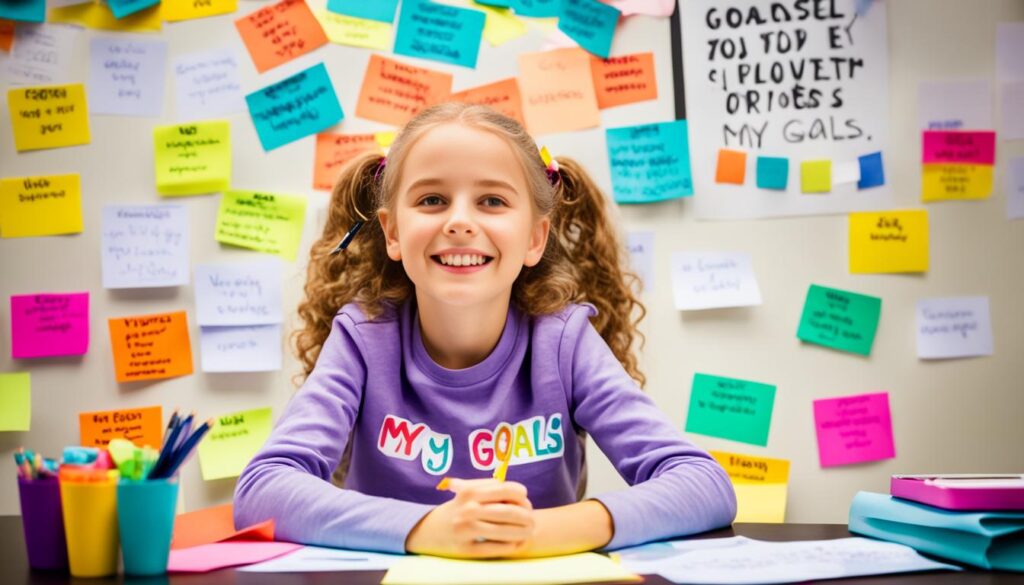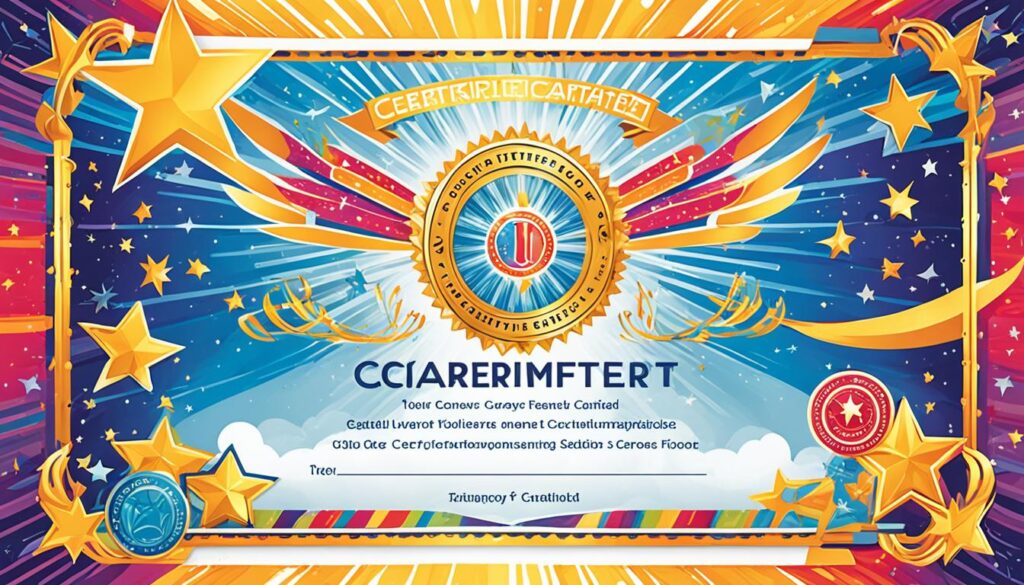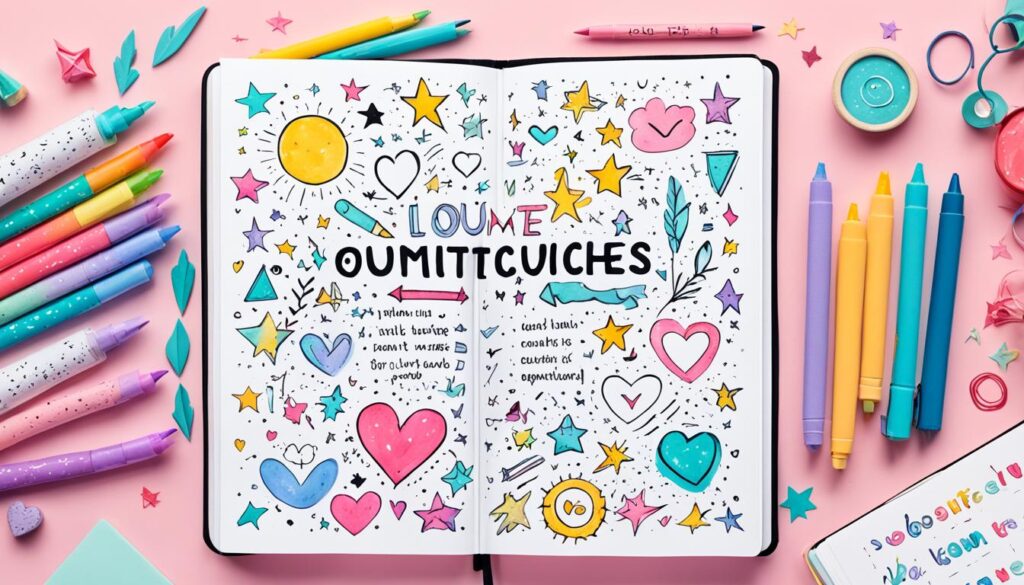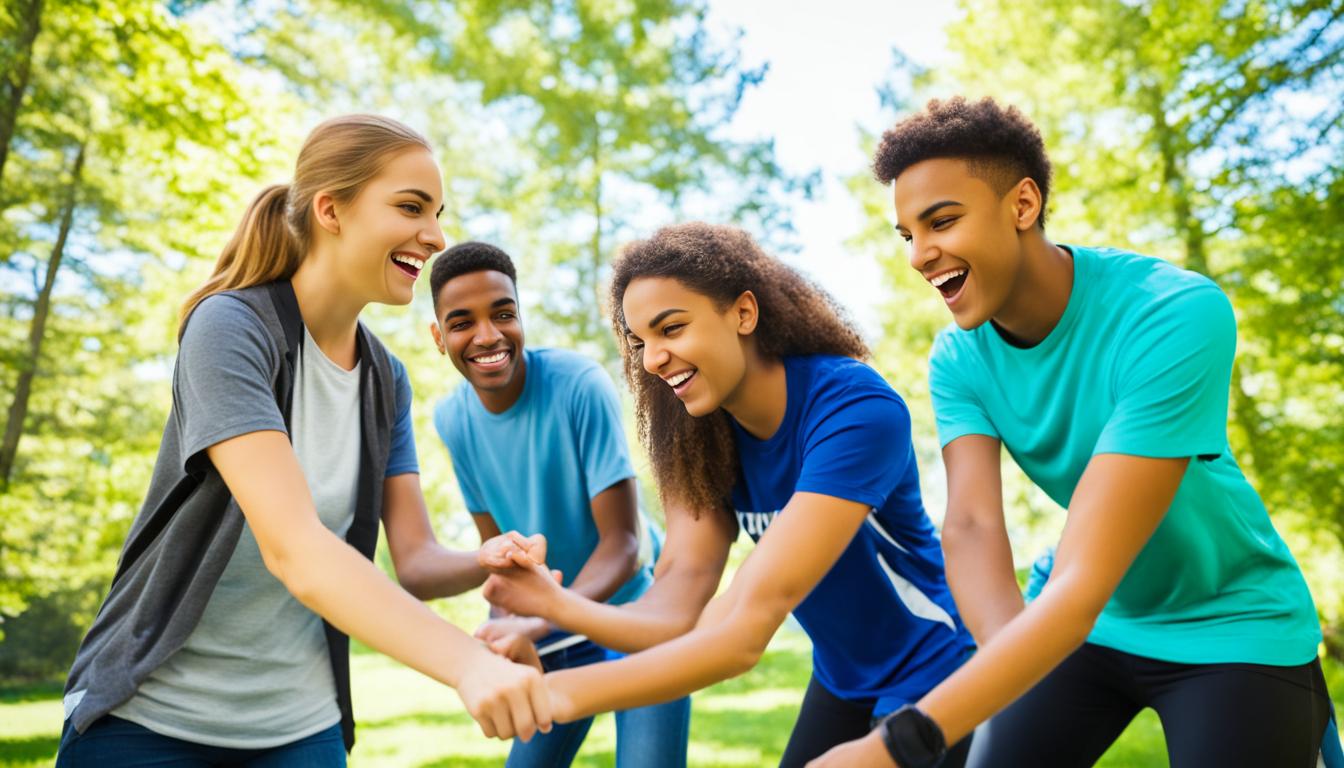Low self-esteem is a common challenge faced by teenagers, especially teenage girls. The good news is that there are various activities and workshops that can help youth build their self-esteem and cultivate a healthy sense of self-worth. These activities focus on empowering young people, boosting their confidence, and enhancing their overall well-being.
To build self-esteem in teenagers, it’s important to address the three main areas of self-esteem: competence, resilience, and optimism. Activities and workshops provide opportunities for teens to identify their strengths, values, and interests, which contribute to a strong sense of self. By participating in these initiatives, teenagers can overcome the common causes of low self-esteem, such as negative peer pressure, academic pressure, social media influence, mental health issues, body image concerns, and unsupportive family environments.
One effective way to visualize the fluctuation of self-esteem is through the concept of a “self-esteem bucket.” Just like a bucket, a person’s self-esteem can be filled with positive experiences and attributes that make them feel good about themselves. However, negative experiences and beliefs can create holes in the bucket, causing self-esteem to decrease. Teen self-esteem activities aim to fill the “bucket” and boost self-confidence.
Key Takeaways:
- Activities and workshops can help teenagers build their self-esteem and foster a healthy sense of self-worth.
- Low self-esteem in adolescents can be caused by factors such as negative peer pressure, academic pressure, social media influence, mental health issues, body image concerns, and unsupportive family environments.
- The concept of a “self-esteem bucket” helps visualize the fluctuation of self-esteem levels.
- Teen self-esteem activities aim to fill the “bucket” and boost self-confidence.
- By participating in these activities, teenagers can overcome the common causes of low self-esteem and develop a positive self-image.
Understanding Self-Esteem in Teenagers
During adolescence, there is a significant shift in priorities for teenagers. They begin to place increased emphasis on friendships, romantic relationships, and social media use. While navigating through this transformative phase, teenagers may experience anxiety related to job competence or academic achievement. Additionally, physical and hormonal changes play a role in the fluctuation of self-esteem during this time.
It is crucial for parents and caregivers to actively work on understanding and building their teenagers’ self-esteem, as it is fundamental to their overall well-being. Self-esteem in teenagers encompasses three key areas: competence, resilience, and optimism. By focusing on these aspects, parents can provide the necessary support to help their teenagers develop strong self-confidence.
- Competence: Teenagers often face challenges related to their abilities, whether it be in academics, sports, or other areas of interest. They may compare themselves to their peers or feel the pressure to meet certain standards. Building competence involves encouraging teenagers to focus on their strengths and celebrate their achievements, no matter how small. It is important to remind them that everyone has unique talents and abilities.
- Resilience: Adolescence can be a tumultuous period, and teenagers may encounter setbacks, failures, or rejection. Developing resilience helps teenagers bounce back from these challenges and setbacks. Parents can support their teenagers by teaching them problem-solving skills, fostering a growth mindset, and providing a safe space to express and process their emotions.
- Optimism: Optimism is the ability to maintain a positive outlook even in the face of adversity. Encouraging teenagers to focus on the positive aspects of their lives and helping them develop a sense of gratitude can contribute to their overall optimism. Teaching them to reframe negative situations and view them as opportunities for growth can also boost their self-esteem.
By understanding these dimensions of self-esteem in teenagers and actively working on building their self-confidence, parents can provide invaluable support during this crucial stage of development.
Common Causes of Low Self-Esteem in Adolescence
Adolescence is a critical stage of development, and several factors can contribute to low self-esteem in teenagers. Understanding these causes can help us address and support their emotional well-being.
1. Negative Influences on Self-Esteem
Teenagers are vulnerable to negative influences that can significantly impact their self-esteem. Insincere friends, negative peer pressure, and bullying can all erode their sense of self-worth and confidence.
2. Academic Pressure
The academic demands placed on teenagers can be overwhelming. High expectations, competition, and the fear of failure can lead to feelings of inadequacy and low self-esteem.
3. Social Media Influence
In today’s digital age, social media plays a significant role in teenagers’ lives. Constant exposure to carefully curated images and comparisons to others can create unrealistic standards and negatively affect self-esteem.
4. Mental Health Problems
Teenagers facing mental health issues, such as depression, anxiety, or eating disorders, often experience a decline in self-esteem. These conditions can amplify negative thoughts and impact their overall perception of themselves.
5. Body Image Issues
Body image concerns are prevalent among adolescents, especially due to societal pressures and unrealistic beauty standards. Negative body image can lead to low self-esteem and a distorted self-perception.
6. Unsupportive Family Environments
Family dynamics and relationships can significantly influence a teenager’s self-esteem. Lack of emotional support, criticism, or neglect within the family can contribute to feelings of worthlessness.
7. Chronic Stress
Excessive stress, whether from school, extracurricular activities, or personal challenges, can wear down a teenager’s self-esteem. Continuous exposure to stressors can make them feel overwhelmed and inadequate.
8. Low Physical Activity Levels
Physical activity plays an essential role in maintaining positive mental health and self-esteem. Insufficient exercise and a sedentary lifestyle can contribute to a decline in overall well-being and self-perception.
| Causes | Impact on Self-Esteem |
|---|---|
| Negative Influences | Erodes self-worth and confidence |
| Academic Pressure | Feeling of inadequacy and fear of failure |
| Social Media Influence | Unrealistic standards and comparisons |
| Mental Health Problems | Amplifies negative thoughts and self-perception |
| Body Image Issues | Negative perception of one’s appearance |
| Unsupportive Family Environments | Lack of emotional support and criticism |
| Chronic Stress | Feeling overwhelmed and inadequate |
| Low Physical Activity Levels | Decreased overall well-being and self-perception |
Identifying and addressing these causes is essential in helping teenagers build a healthy sense of self-esteem and confidence.

The Self-Esteem Bucket Analogy
In order to better understand the fluctuations in self-esteem levels, let’s explore the concept of the self-esteem bucket. Think of the bucket as a representation of a person’s self-esteem, which can either be filled with positive experiences and attributes that make them feel good about themselves or be depleted by negative experiences and beliefs.
Just like a real bucket, the self-esteem bucket can have holes. These holes are caused by negative experiences and beliefs that erode a person’s self-esteem, ultimately leading to a decrease in their confidence and self-worth. It is important to identify these holes and find ways to fill them in order to build and maintain a healthy level of self-esteem.
Visualizing the self-esteem bucket helps us understand that self-esteem is not a fixed trait but rather a dynamic and ever-changing aspect of our lives. Our self-esteem levels can fluctuate based on the positive or negative experiences we encounter.
By actively seeking out activities and strategies that contribute to positive self-esteem, we can begin to fill our self-esteem buckets and strengthen our self-confidence. This visual analogy serves as a reminder that building self-esteem is an ongoing process that requires consistent effort and self-awareness.
Visual Representation of the Self-Esteem Bucket Analogy
This image illustrates how positive experiences and attributes fill the self-esteem bucket, while negative experiences and beliefs create holes that diminish self-esteem levels.
Teenage Confidence Building Activities
Teenagers often face challenges when it comes to building their self-confidence and self-esteem. Engaging in activities that promote self-worth and confidence can make a significant difference in their lives. Here are some teenage confidence building activities that can help fill the self-esteem bucket and boost self-confidence:
- Positive goal setting: Encourage your teenager to set positive and achievable goals. This can be done in various areas of their life, such as academics, sports, or personal development. Setting goals helps teens focus their energy and see their progress, fostering a sense of accomplishment and increasing self-confidence.
- ‘Open When…’ letters: Writing “Open When…” letters is a meaningful activity that helps teens stay resilient and motivated during challenging times. These letters can be written to their future selves or to be opened at specific moments, such as when they’re feeling down or in need of encouragement. It serves as a powerful reminder of their inner strength and resilience.
- Practicing positive self-talk: Teach your teenager the importance of positive self-talk. Encourage them to challenge negative thoughts and replace them with positive affirmations. By fostering a positive mindset, teens can boost their self-esteem and build confidence in their abilities.
- “Wall of Fame”: Create a dedicated space in your teenager’s room to display their accomplishments. This can be a physical wall or a bulletin board where they can showcase certificates, awards, artwork, or photographs of memorable achievements. The visual representation of their successes serves as a constant reminder of their capabilities and boosts their self-confidence.
- Exploring new hobbies: Encourage your teenager to explore new hobbies or activities that interest them. This allows them to discover their passions and talents, leading to a sense of purpose and accomplishment. Trying new things can also help expand their comfort zone and build confidence in their abilities.
- Participating in cooperative board games: Cooperative board games require teamwork and collaboration. Engaging in these games with friends or family members helps teenagers develop their social skills, enhance communication, and build confidence in their ability to work with others towards a common goal.
Engage with your teenager as a team and participate in activities that foster confidence and self-esteem in their everyday lives. By providing support and encouragement, you can help them navigate the challenges of adolescence and develop a strong sense of self-worth.
Positive Goal Setting and ‘Open When…’ Letters
Positive goal setting is a powerful tool for building self-esteem in teens. By setting specific, measurable, attainable, relevant, and time-based (SMART) goals, teenagers can gain a sense of direction and accomplishment. These goals provide a roadmap for success and serve as a motivational force to strive for personal growth and improvement.
Writing ‘Open When…’ letters is another effective strategy to boost self-esteem and resilience in teens. These letters are heartfelt messages addressed to their future selves, to be opened when they face challenges or need encouragement. These letters serve as a reminder of their strengths, accomplishments, and the support they have in overcoming obstacles. Opening these letters during difficult times can provide comfort, motivation, and a renewed sense of self-worth.

Self-Esteem Worksheets for Teens
To further enhance the positive goal-setting process, self-esteem worksheets can be a helpful resource for teens. These worksheets encourage self-reflection and introspection, allowing teenagers to identify their strengths, interests, and values. By completing these worksheets, teens gain a deeper understanding of themselves, fostering a positive self-image and improved self-esteem.
Here is an example of a self-esteem worksheet for teens:
| Worksheet: Self-Esteem Boosters |
|---|
| List 5 things you love about yourself |
| Describe a recent accomplishment that made you feel proud |
| Write down a positive affirmation or mantra that empowers you |
| Identify 3 qualities or skills you admire in others and would like to develop in yourself |
| Reflect on a challenging situation you overcame and describe how it made you stronger |
Working on worksheets like this can help teens recognize their worth, appreciate their achievements, and develop a positive mindset. It’s an opportunity for self-reflection and growth, contributing to their overall well-being.
Transforming Negative Self-Talk Activity
Negative self-talk is a common contributor to low self-esteem. When teens constantly criticize themselves or engage in negative internal dialogue, it can have a detrimental impact on their confidence and well-being. To address this issue, the transforming negative self-talk activity helps teenagers identify their negative self-talk patterns, understand the triggers, and replace negative thoughts with positive affirmations.
Here’s how the activity works:
- Self-Reflection: Encourage teenagers to self-reflect and become aware of their negative self-talk. They can jot down instances when they catch themselves engaging in negative thoughts or self-critical remarks.
- Identifying Triggers: Ask teenagers to identify the triggers or situations that often lead to negative self-talk. It could be when facing a challenge, receiving criticism, or comparing themselves to others.
- Positive Affirmations: Teach them the power of positive affirmations – short, uplifting statements that counteract negative thoughts. Provide some examples such as “I am capable,” “I am worthy of love and respect,” or “I embrace my imperfections.”
- Replacing Negative Thoughts: Encourage teenagers to actively replace negative thoughts with positive affirmations whenever they catch themselves engaging in self-criticism. This practice helps rewire their mindset and build a more positive self-image.
By transforming negative self-talk into positive affirmations, teenagers can cultivate self-compassion, boost their self-esteem, and develop a more optimistic outlook. It’s important to remind them that transforming self-talk takes time and practice, but the effort is worthwhile.
Illustrative Example:
“Whenever I have a setback in school, I immediately start beating myself up and thinking I’m not smart enough. Through this activity, I learned to catch myself when I’m engaging in negative self-talk. Instead of berating myself, I remind myself that I am capable of learning and growing. By replacing negative thoughts with positive affirmations, I’ve noticed a significant improvement in my self-esteem and overall well-being.”
– Sarah, 16 years old
Remember, transforming negative self-talk is a valuable tool for fostering self-love and building a positive mindset. By empowering teenagers to replace negative thoughts with positive affirmations, we can support them in their journey towards improved self-esteem.
| Benefits of Transforming Negative Self-Talk |
|---|
| Enhances self-compassion and self-acceptance |
| Boosts self-esteem and self-confidence |
| Develops a positive mindset and outlook on life |
| Reduces stress and anxiety |
| Improves overall well-being and mental health |
Certificate of Recognition
The Certificate of Recognition activity is a wonderful way to acknowledge and celebrate the achievements of students. In this activity, each student is assigned a classmate to observe and appreciate for a week, noting their accomplishments and positive qualities. At the end of the week, a certificate is created, highlighting the recognized student’s achievements and qualities.
This activity not only recognizes the accomplishments of students but also promotes a sense of accomplishment, purpose, and pride. It encourages students to reflect on their own achievements and positive attributes, fostering self-esteem and self-recognition.
By participating in the Certificate of Recognition activity, students develop a greater appreciation for the achievements of others, fostering a supportive and positive classroom environment. Furthermore, receiving recognition from their peers can have a powerful impact on students’ self-esteem and motivation.

The benefits of the Certificate of Recognition activity go beyond celebrating achievements. It promotes a culture of appreciation and encourages students to focus on positive aspects rather than dwelling on their shortcomings. This activity also allows students to practice recognizing and valuing the strengths and accomplishments of others, enhancing their empathy and interpersonal skills.
| Benefits of the Certificate of Recognition Activity |
|---|
| 1. Boosts self-esteem and self-recognition |
| 2. Fosters a supportive and positive classroom environment |
| 3. Cultivates empathy and interpersonal skills |
| 4. Promotes appreciation and gratitude |
Gratitude Journal
Practicing gratitude is a powerful tool for cultivating a positive mindset and boosting self-esteem in teenagers. Keeping a gratitude journal is a simple yet effective activity that encourages teens to notice and appreciate the positive aspects of their lives.
By regularly writing down things they are grateful for, students develop a habit of focusing on the good and shifting their attention away from negative thoughts. This practice helps teenagers develop a more optimistic outlook and enhance their overall well-being.
“Gratitude turns what we have into enough.”
Incorporating gratitude prompts and discussions into classroom activities can further deepen the practice of gratitude and positive thinking. Teachers can provide thought-provoking prompts such as:
- What are three things you are grateful for today?
- Who is someone you appreciate and why?
- What is a positive experience you had recently, and how did it make you feel?
Engaging in these gratitude-focused activities helps teens foster a sense of appreciation and develop a more joyful outlook on life.
| Benefits of Keeping a Gratitude Journal |
|---|
| Boosts self-esteem by focusing on positive experiences and strengths |
| Reduces stress and improves overall well-being |
| Enhances resilience and the ability to cope with challenges |
| Develops a positive mindset and promotes positive thinking |
| Encourages self-reflection and personal growth |
Goals Journal
A goals journal is a powerful tool for teenagers to set and track their progress towards measurable and achievable goals. Encouraging teens to take ownership of their aspirations, a goals journal enables them to develop a sense of accomplishment and confidence as they make significant strides towards their desired outcomes.
By consistently recording their progress and reflecting on their achievements, teenagers can witness the growth and development they have experienced along their journey. This progress tracking not only serves as a reminder of their accomplishments but also motivates them to continue working towards their goals.
How to Use a Goals Journal:
- Set Specific Goals: Help your teen identify specific goals that are meaningful and aligned with their interests and values.
- Break Down into Actionable Steps: Break down the goals into actionable steps that can be easily accomplished.
- Record Progress: Encourage your teen to regularly record their progress in their goals journal, noting the steps they have completed and the milestones they have achieved.
- Celebrate Achievements: Celebrate each milestone and accomplishment along the way to foster a positive self-image and reinforce the progress made.
- Make Adjustments: Teach your teen the importance of reviewing and adjusting their goals as necessary. This enables them to adapt to changing circumstances and stay focused.
A goals journal not only provides structure and direction but also cultivates resilience and a growth mindset. By instilling goal-setting habits early on, teenagers develop the skills necessary to overcome challenges and pursue their dreams with confidence.

| Benefits of Using a Goals Journal: |
|---|
| 1. Enhanced Focus and Clarity |
| 2. Increased Motivation and Commitment |
| 3. Improved Self-Confidence and Self-Efficacy |
| 4. Development of Time Management Skills |
| 5. Strengthened Problem-Solving Abilities |
| 6. Heightened Sense of Direction and Purpose |
Cooperative Board Games
Engaging in cooperative board games or group activities is an excellent way to foster teamwork and develop essential social skills in teenagers. By working together towards a common goal, teens not only build positive relationships but also develop a sense of belonging and camaraderie. Cooperative board games require players to communicate, strategize, and make decisions collectively, promoting effective teamwork and collaboration.
These games provide an opportunity for teenagers to learn how to cooperate, compromise, and resolve conflicts in a supportive and enjoyable environment. The emphasis on teamwork encourages active participation and ensures that everyone’s contributions are valued, promoting a sense of inclusivity and unity.
Cooperative board games also offer the chance to practice critical thinking, problem-solving, and decision-making skills. By engaging in discussions, brainstorming solutions, and analyzing different perspectives, teens develop the ability to collaborate effectively and make informed choices as a team.
Furthermore, cooperative board games provide a safe space for teenagers to practice and refine their social skills. Through gameplay, they learn to communicate clearly, listen actively, and respect others’ opinions and ideas. These interpersonal skills are valuable not only in gaming scenarios but also in real-life situations, such as school projects, group presentations, and future workplaces.
Benefits of Cooperative Board Games:
- Promotes teamwork and collaboration
- Fosters effective communication and active listening
- Develops critical thinking and problem-solving skills
- Enhances decision-making abilities
- Builds social skills and promotes inclusivity
- Encourages respect for others’ perspectives
Cooperative board games have a positive impact on teenagers’ self-esteem and confidence. Through shared achievements and overcoming challenges as a team, teens experience a sense of accomplishment, which contributes to their overall well-being and self-worth. These games also provide opportunities for teenagers to learn from failure, develop resilience, and celebrate both personal and collective successes, building their confidence in themselves and their abilities.
So, gather your friends or family, set up a cooperative board game, and enjoy the benefits of teamwork, social interaction, and skill development. Let the games begin!
Top Cooperative Board Games
| Game Title | Description | No. of Players | Recommended Age |
|---|---|---|---|
| Pandemic | Work together to save humanity from deadly diseases in this thrilling cooperative game. | 2-4 | 14+ |
| Forbidden Island | Embark on an adventure to capture treasures and escape before the island sinks. | 2-4 | 10+ |
| Codenames: Duet | Uncover secret agents and complete missions by giving and interpreting one-word clues. | 2 | 11+ |
| Ghost Stories | Battle against malevolent spirits and protect a village using unique supernatural abilities. | 1-4 | 12+ |
| Mysterium | Collaborate to solve a murder mystery by interpreting surreal dreamlike visions. | 2-7 | 10+ |
Achievements Collage
Creating an achievements collage is an effective way for teens to reflect on their past accomplishments and cultivate a positive self-image. By assembling a visual representation of their achievements, teens can celebrate their successes and boost their self-esteem. Displaying the collage in their room serves as a constant reminder of what they have accomplished.
Reflecting on past achievements is a powerful method to remind teens of their capabilities and strengths. When they see their achievements prominently displayed, it reinforces their belief in themselves and their abilities. Moreover, the process of creating the achievements collage allows teens to honor their hard work and dedication.
By including various accomplishments in the collage, such as academic awards, sports medals, artwork, or even personal milestones, teens can see the breadth and depth of their achievements. This holistic view helps them develop a positive self-image and realize the value they bring to different aspects of their lives.
The achievements collage can be a source of inspiration during challenging times, as it serves as a reminder of the hurdles they have overcome and the milestones they have reached. It encourages them to persevere and continue striving for success in their future endeavors.
Overall, the achievements collage is a powerful tool for celebrating accomplishments and fostering a positive self-image. It is a visual representation of the hard work, determination, and growth that teens have experienced. By recognizing and reflecting on their achievements, teens can build a strong foundation of self-worth and confidence.
Conclusion
Building self-esteem in youth is an essential task that can greatly impact their overall well-being and lifelong success. By implementing various activities and strategies, such as positive goal setting, transforming negative self-talk, and practicing gratitude, teenagers can enhance their self-confidence and develop a positive self-image. It is crucial for parents, educators, and mentors to actively engage with teenagers on this journey, providing guidance and support along the way.
Positive goal setting allows teenagers to set specific and achievable goals, fostering a sense of accomplishment and confidence as they make progress. Transforming negative self-talk helps them challenge and reframe negative thoughts, promoting a more positive mindset and improved self-esteem. Practicing gratitude through a gratitude journal cultivates a positive outlook and appreciation for the good in their lives.
These activities, in combination with others discussed in this article, provide a comprehensive approach to building self-esteem in youth. By empowering teenagers and partnering with them, we can create an environment that promotes their growth and development, ultimately setting them up for a fulfilling and successful future.
